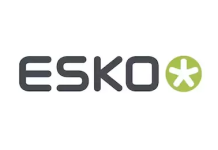The inundation of irrelevant communications and junk mail is pushing European consumer loyalty to breaking point with the majority (84%) ready to take action against brands, according to new research commissioned by Ricoh.
Irrelevant communications, both online and paper-based, are a huge bug-bear for more than two thirds of consumers in Europe, who consider a quarter of what they receive to be junk. Six in ten consumers even see junk mail as more frustrating than their commute to work.
Beyond the mere frustration factor, consumers are suffering negative consequences from being unable to sift through the flood of irrelevant information and poor quality communications. A quarter (25%) have missed a payment deadline, and over a third have been unsure how much they owe for a service (34%) or missed offers they were entitled to (39%).
Brands need to beware that irrelevant communications have a significantly detrimental impact on customer loyalty, trust and spend, and consumers are unafraid to bite back. Two-thirds (65%) of consumers report feeling less loyal to a brand spamming with irrelevant information, while a similar number would also spend less (63%) and even go so far as to stop being a customer completely (57%). Nearly a fifth of consumers have moved their custom elsewhere, another fifth have complained to a service provider, and 1-in-10 have taken their complaint to an authoritative body.
‘It’s easier today than ever before to communicate instantly with consumers,’ said Jacques van Wyk, COO of Ricoh SA. ‘The same speed of digital communications also means brands can easily end up spamming consumers with too many messages. They need to practice restraint if they are to remain relevant. Larger brands also face more potential disruption from startups today than any time in history so it’s important they get the mix of relevance versus volume right.’
A majority of consumers (64%) believe more could be done to tailor communications to their individual circumstances. Eight-in-ten would even be willing to share personal data to make this happen, including occupation, salary, Internet browsing habits and health records.
Consumers also increasingly view digital communications as their preferred method to receive information from brands and service providers: for new offers and upgrades (74%), statements and bills (67%) and updates to terms and conditions (64%).
‘People don’t want to be just another number; they need to feel as if companies take time to find out who they are so they don’t send them meaningless information,’ said Van Wyk. ‘Communications tailored specifically for individuals are genuinely effective while those that are not do not achieve the same positive results.’
The industries viewed as currently sending the most relevant communications to consumers are the public sector (42%), financial services (39%), utilities (37%) and healthcare (36%). With the exception of utilities, these industries were similarly seen to be the trustworthiest handlers of customer data. However, no single sector is viewed positively by more than half of consumers, which goes to show significant work still needs to be done by brands across all industries to bring confidence in their customer communications up to scratch.
‘Businesses must streamline collection, distribution and management of consumer data so they can be consistent across all channels, from analogue to digital,’ said Van Wyk. ‘Companies must focus on communications that make people feel valued rather than targeted. That’s what improves loyalty rather than promoting angry, litigious customers.’





















